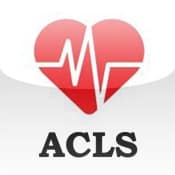Most Recent
Episode 13 Part 1: Killer Coma Cases – The Found Down Patient
In Part 1 of Killer Coma Cases - The Found Down Pateint, Dr. Helman presents two challenging cases to Dr. Brian Steinhart and Dr. David Carr, who tell us loads of key clinical pearls in their approaches to the 'found down' patient. They discuss the important components of the neurological exam in the comatose patient, the differential diagnosis of altered mental status and hyperthermia, the controversies around when to get a CT head before performing a lumbar puncture, and much more in this Killer Coma Cases episode. In Part 1 of this episode, we discuss the limitations of plain CT, the interpretation of CSF and the many faces of seizures. Any more information would be giving away the cases.....
Best Case Ever 2 The Found Down Patient
In relation to Episode 13 on The Found Down Patient with Dr. Brian Steinhart and Dr. David Carr, we present here, the second of our new 5 minute 'Best Case Ever' series. Dr. Steinhart's found down patient In Episode 13 The Found Down Patient, Dr. Helman presents 4 challenging cases of patients who present with altered mental status to Dr. Carr and Dr. Steinhart, who give us loads of key pearls and intriguing controversy in the evaluation and treatment of these difficult patients. [wpfilebase tag=file id=370 tpl=emc-play /] [wpfilebase tag=file id=371 tpl=emc-mp3 /]
Episode 12 Part 2: ACLS Guidelines – Atropine, Adenosine & Therapeutic Hypothermia
In Part 2 of this episode on ACLS Guidelines - Atropine, Adenosine & Therapeutic Hypothermia, Dr. Steven Brooks and Dr. Michael Feldman discuss the removal of Atropine from the PEA/Asystole algorithm, the indications and dangers of Adenosine in wide-complex tachycardias, pressors as a bridge to transvenous pacing in unstable bradycardias, and the key elements of post cardiac arrest care including therapeutic hypothermia and PCI. They answer questions such as: In which arrhythmias can Amiodarone cause more harm than good? Is there any role for transcutaneous pacing for asystole? When should Bicarb be given in the arrest situation? In what situations is Atropine contra-indicated or the dosage need to be adjusted? How has the widespread use of therapeutic hypothermia currently effected our ability to prognosticate post-arrest patients? What are the indications for PCI and thrombolysis in the cardiac arrest patient? Should we be using therapeutic hypothermia in the non-Vfib arrest patient? What is the best method for achieving the target temperature for the patient undergoing therapeutic hypothermia? and many more......
Episode 12 Part 1: ACLS Guidelines – What’s New & Controversial
In Part 1 of this episode on the latest ACLS Guidelines, Dr. Steven Brooks and Dr. Michael Feldman review and debate what's new and what's controversial in the the 2010 American Heart Association Guidelines for Cardiopulmonary Resuscitation and Emergency Cardiovascular Care. Within the frameworks of Cardiocerebral Rescusitation and the 3 phase model of rescucitation (electrical, circulatory and metabolic), they discuss the importance of high quality CPR, the de-emphasis on early ventilation and the utility of continuous quantitative waveform capnography. Dr. Brooks and Dr. Feldman answer questions such as: of all the therapeutic manoeuvres we do for the cardiac arrest patient, which ones have been shown to improve survival to hospital discharge? What is the evidence for chest compression machines? What is the utility of bedside ultrasound in the cardiac arrest patient? Why is cardiac arrest survival to discharge in Seattle the best in the world? Should we be performing 'hands-on defibrillation'? and many more.....
Episode 11: Cognitive Decision Making and Medical Error
In this episode on Cognitive Decision Making & Medical Error, Dr. Doug Sinclair, CMO of St. Michael's Hospital and Dr. Chris Hicks show us that, while the ED physician's knowledge base may play a small part in predicting medical error, more important might be how we understand and reflect upon our decision-making processes, how we communicate with our staff and patients, and how we cope with the ED environment and shift work. Medical error is the 6th leading cause of death in North America, and despite huge advances in imaging technology and lab testing as well as an explosion of EM literature in recent years, the misdiagnosis rate detected through autopsy studies has not changed significantly over the past century. Studies on diagnostic error in emergency medicine have shown error rates between 1 and 12%, and it's been suggested that cognitive error, or some flaw in the decision making process (as apposed to a lack of knowledge), is present in about 95% of these cases. Dr. Sinclair and Dr. Hicks elucidate for us how to identify and understand cognitive decision making and medical error, and how we can improve our decision making, reduce medical error and optimize the care of our patients.
Episode 10 Part 2: Trauma Pearls and Pitfalls
In Part 2 of this episode on Trauma Pearls & Pitfalls Dr. Dave MacKinnon and Dr. Mike Brzozowski go through key management strategies and controversies surrounding head, neck, chest, abdominal, pelvic and extremity trauma, followed by a discussion on how best to prepare the trauma patient for transfer to a trauma centre.





